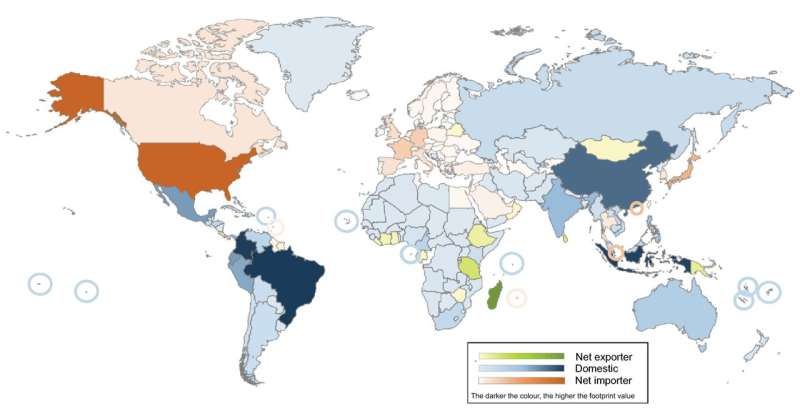
The impact of human consumption on species extinction risk has been quantified by international research as the 15th Conference of the Parties to the Convention on Biological Diversity takes place.
According to the recent Intergovernmental Science-Policy Platform on Biodiversity and Ecosystem Services assessment report, around 1 million species are at risk of extinction.
The research shows that consumption in Europe, North America, and East Asia leads to extinction risk in other countries. The Nombre de Dios Streamside Frog in Honduras is one of the affected species.
The research was co-authored by the chief scientist of the International Union for the Preservation of Nature and the chief economist of the University of Sydney.
The authors think that the crisis is similar to the climate one.
Key findings
The purchase of a coffee in Australia may contribute to the loss of flora and fauna in Honduras. Even if we don't see the impact, the choices we make every day have an impact on the natural world.
Everything that we consume has been derived from the natural world, with raw materials transformed into finished products through a variety of supply chain transactions. These transactions have a direct impact on the species.
This insight into how prevalently consumption patterns influence biodiversity loss across the globe is critical to inform ongoing international negotiations for nature, including the 15th Conference of the Parties to the Convention on Biological Diversity.
The study found that about 30 percent of the global extinction-risk footprint is embedded in international trade.
The activities which threaten species in a given location are often caused by consumption patterns in far-away locations, meaning that local interventions may be insufficient.
Appropriate interventions to address extinction risk should be different from those implemented in Colombia, where 93 percent of the extinction-risk footprint is generated by domestic consumption.
About the study.
The authors used data from the Red List of Threatened Species to create a metric for extinction risk.
They used the methodology widely-used to quantify carbon footprints to link extinction risk to global consumption patterns using the global supply chain database Eora.
The extinction-risk footprint was calculated by the economic sector.
A Scientific Reports paper co-authored by Associate Professor Geschke showed that international trade is a key driver of biodiversity threats.
The International Institute for Sustainability in Brazil is a part of the new paper.
More information: Amanda Irwin et al, Quantifying and categorising national extinction-risk footprints, Scientific Reports (2022). DOI: 10.1038/s41598-022-09827-0 Journal information: Scientific Reports Citation: Your morning coffee could hasten species' extinction (2022, April 13) retrieved 13 April 2022 from https://phys.org/news/2022-04-morning-coffee-hasten-species-extinction.html This document is subject to copyright. Apart from any fair dealing for the purpose of private study or research, no part may be reproduced without the written permission. The content is provided for information purposes only.